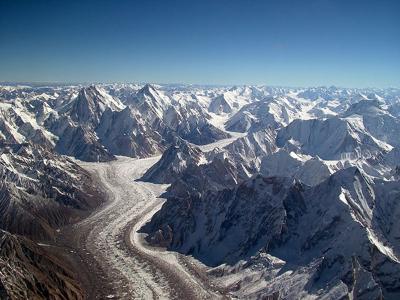The Beginning of the Transition to Colder/Warmer Times
by Carl
(Reno, NV, USA)
The tilt of the Earth for the last 20,000 years has put more radiation on the Temperate Zones and the Polar Zones. It caused the beginning of the meltdown by 18,000 years that continued strongly until about 9,000 years ago when it slowed a bit but continued.
It's all about long-term cycles and global tilt
However, this will also bode ill for the parts of the Temperate Zones closer to the Polar Zones. Here is why. The solar radiation will be less in these parts, while it will be stronger in the Equatorial Zone. This will increase the heat in the Great Warm Water Pool (GWWP) (discovered at NASA) that ranges from Madagascar across the Indian Ocean, past Indonesia and into the Central Pacific.This GWWP gets hotter and expands to bring floods that we are seeing nowadays, and then it cools and shrinks. The heated water evaporates enormous extra quantities in the atmosphere, and where it cools, it rains torrents.
The GWWP is directly connected to the El Nino/La Nina cycles, that somewhat follow the sunspot cycles, but includes multiple cycles of them in that the GWWP appears to have a cycle of about 40-41 years. Its temperature and size vary -20% to +20% from the average, a 40% difference between droughts and floods. For more on El Nino, see www.informatron.biz
Water vapor is 22,000 parts per million on average, while CO2 is 386 ppm. And each water vapor molecule absorbs about 50 times as much radiated energy as CO2. Thus it is impossible for CO2 to be anything other than negligible in warming or cooling of the planet (I am sorry Virginia, but there is no CO2 danger).
But water and water vapor are critical. The oceans are the heat storage bins for the Earth, but the GWWP is the most important bin. That water is now at 86 degrees F., which I submit is very warm for oceans. This latent heat in the GWWP has been driving the flooding (which is uneven and there can be terrible droughts in places where the moisture laden air doesn't reach).
In the image above, the red is quite warm but the lighter orange is the hottest and send unimaginable quantities of water into the atmosphere. The image is taken from space and processed to show relative temperatures.
-- Carl G. Looney, Ph.D.
www.informatron.biz
Barry's Response - Interesting. I was hoping to find more credible sources online about this phenomenon, but the supply is short. Thanks for spreading the word, Carl.
Our planet's climate is influenced by natural factors over time
Over approximately 41,000-year cycles, Earth's axial tilt, or obliquity, varies between 22.1° and 24.5°. Ice ages are caused by variations in solar radiation.In the western Pacific Ocean, the Great Warm Water Pool (GWWP) is characterized by sea surface temperatures averaging 84°F (29°C).
Water Vapor vs. CO2 in Climate Dynamics: Water vapor is indeed a potent greenhouse gas, with concentrations around 22,000 parts per million. In spite of its significant role in the greenhouse effect, CO2 also contributes to warming, and its increase amplifies water vapor.
You emphasize the complexity of Earth's climate system, which is shaped by natural cycles and human activity. Milankovitch cycles have historically driven climatic shifts, but recent rapid changes suggest there's more going on.
Search this site for more information now.
Do you have concerns about air pollution in your area??
Perhaps modelling air pollution will provide the answers to your question.
That is what I do on a full-time basis. Find out if it is necessary for your project.
Have your Say...
on the StuffintheAir facebook page
Other topics listed in these guides:
The Stuff-in-the-Air Site Map
And,
Thank you to my research and writing assistants, ChatGPT and WordTune, as well as Wombo and others for the images.
GPT-4, OpenAI's large-scale language generation model (and others provided by Google and Meta), helped generate this text. As soon as draft language is generated, the author reviews, edits, and revises it to their own liking and is responsible for the content.



